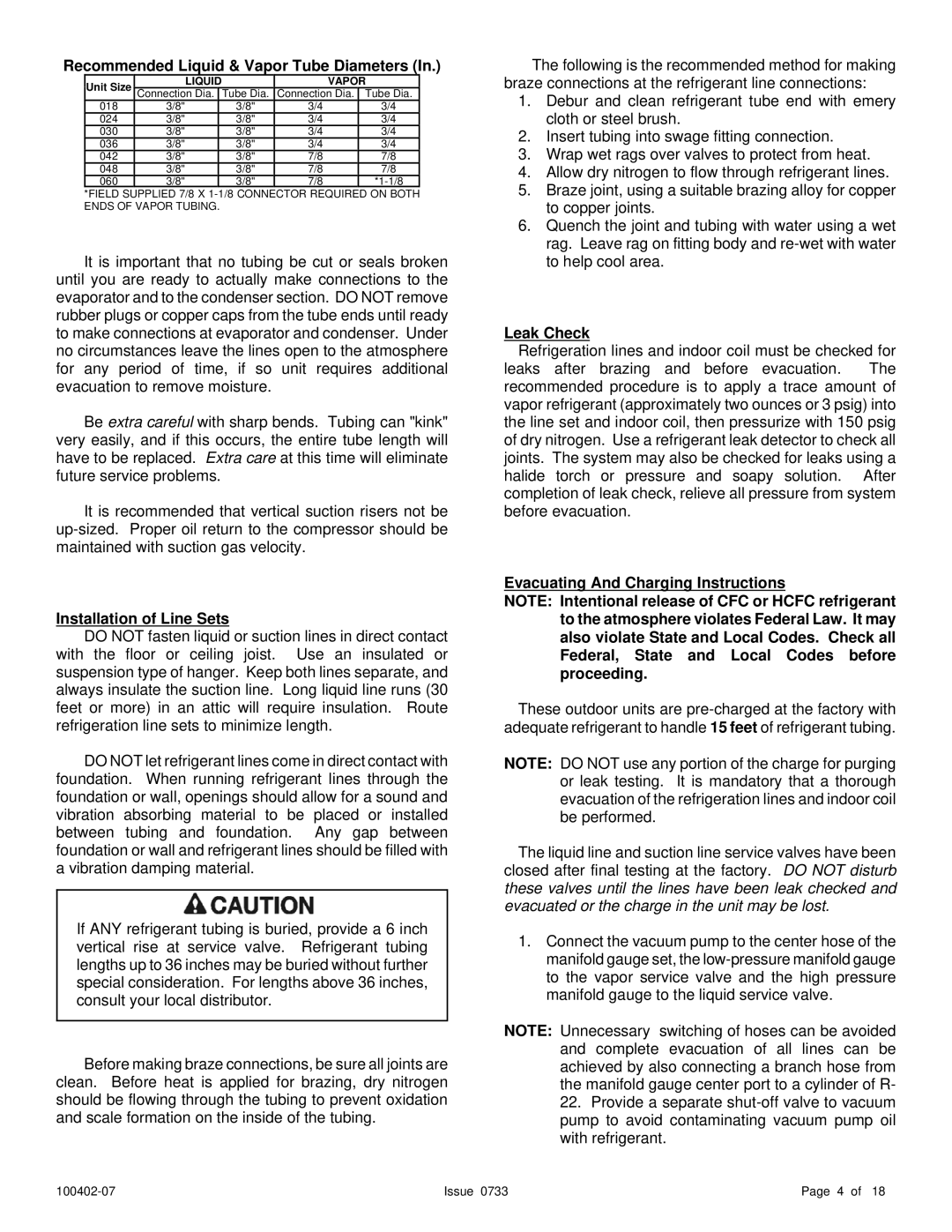2HP13 specifications
Ducane, a well-respected name in the HVAC industry, offers a range of innovative heating, ventilation, and air conditioning solutions. One standout model in their lineup is the Ducane 2HP13, a 13 SEER central air conditioning unit that combines efficiency, reliability, and advanced technology to create comfortable indoor climates.One of the main features of the Ducane 2HP13 is its efficient 13 SEER rating, which stands for Seasonal Energy Efficiency Ratio. This rating indicates that the unit consumes less energy compared to standard models, resulting in lower utility bills and a reduced environmental footprint. The 2HP13 is built for both cooling and heating applications, making it a versatile addition to any home or commercial space.
The Ducane 2HP13 utilizes a durable, all-aluminum coil that offers superior heat transfer capabilities and corrosion resistance. This enhances the unit's efficiency and longevity, ensuring that it continues to perform optimally over the years. The cabinet is constructed from heavy-duty steel with a baked-on powder coat finish, which provides an extra layer of protection against the elements and ensures that the unit maintains its aesthetic appeal.
In terms of indoor comfort, the Ducane 2HP13 employs a high-efficiency scroll compressor. This technology reduces noise levels and improves overall performance, ensuring that your indoor environment remains quiet and comfortable. Additionally, the compressor is equipped with built-in protective features that help safeguard it from potential operational issues, extending its lifespan.
The 2HP13 model also includes a reliable multi-speed blower motor that enhances airflow within the system. This allows for adjustable performance levels which can be tailored to the specific needs of the space, contributing to improved energy efficiency. The unit also supports diagnostic capabilities, allowing for easy maintenance and repair, minimizing downtime in case of any issues.
Furthermore, the Ducane 2HP13 is designed with a user-friendly interface that makes it easy for homeowners to operate. It also integrates seamlessly with various smart thermostats to enhance system control and contribute to even greater energy savings.
In summary, the Ducane 2HP13 embodies a perfect balance of efficiency, reliability, and user-friendly features. Its durable construction, advanced compressor technology, and high-performance capabilities make it an excellent choice for anyone looking to enhance their indoor climate while minimizing their energy consumption. With its strong reputation in the HVAC industry, Ducane ensures that the 2HP13 meets the needs of modern homeowners and businesses alike.

